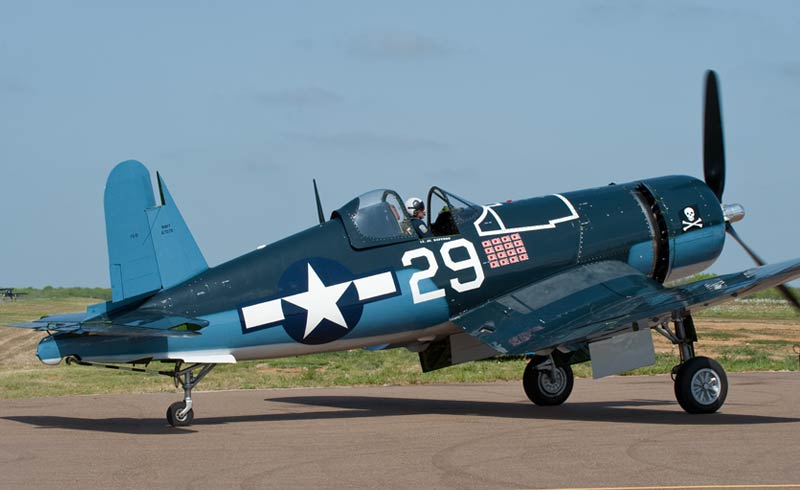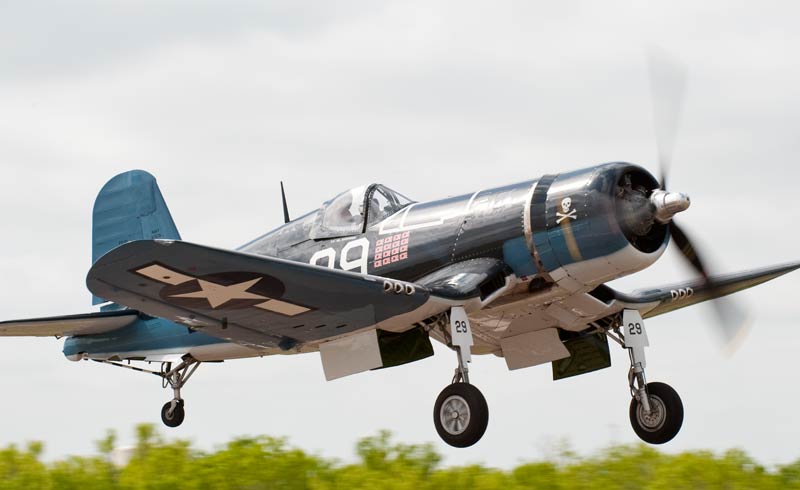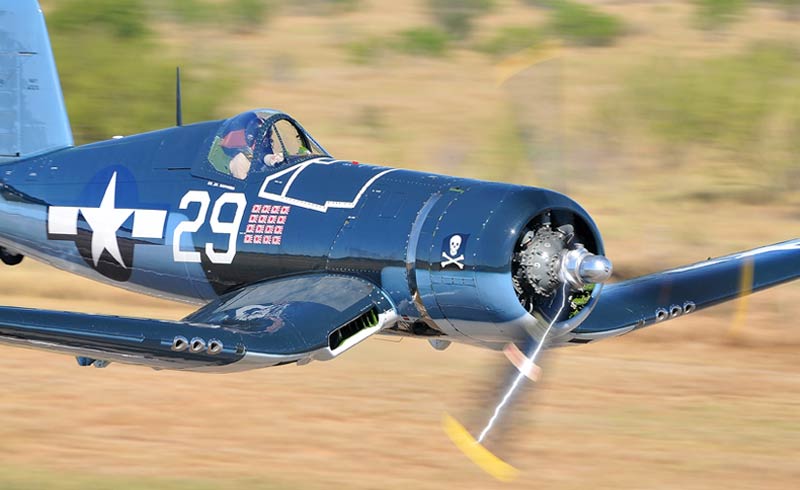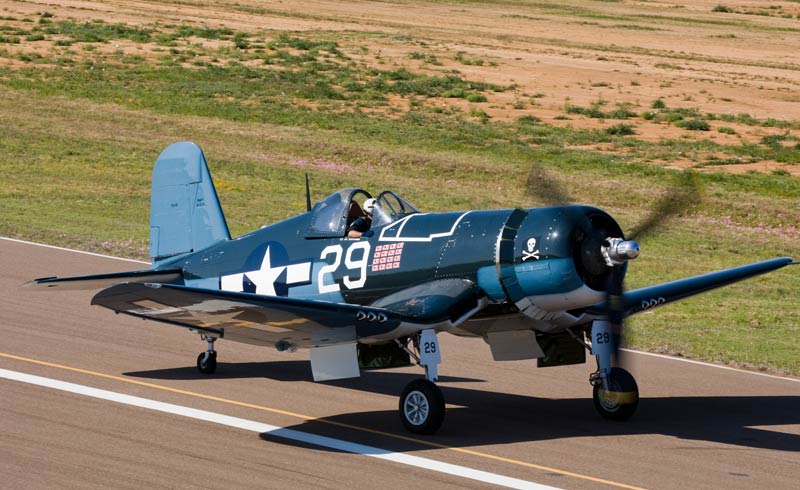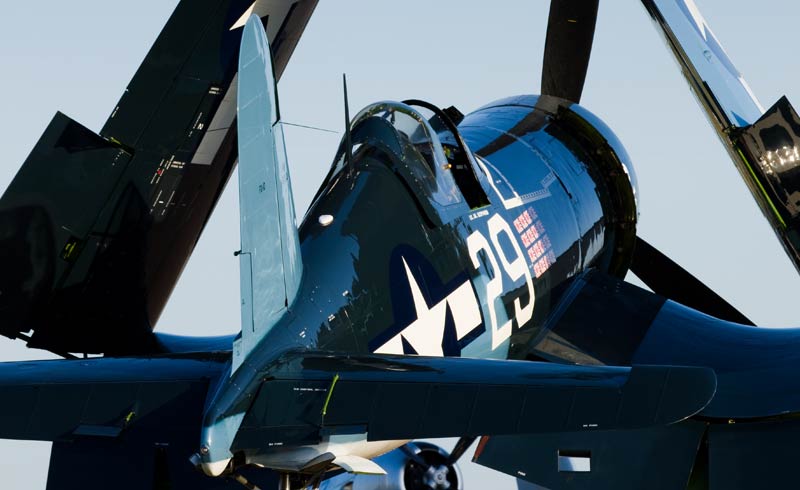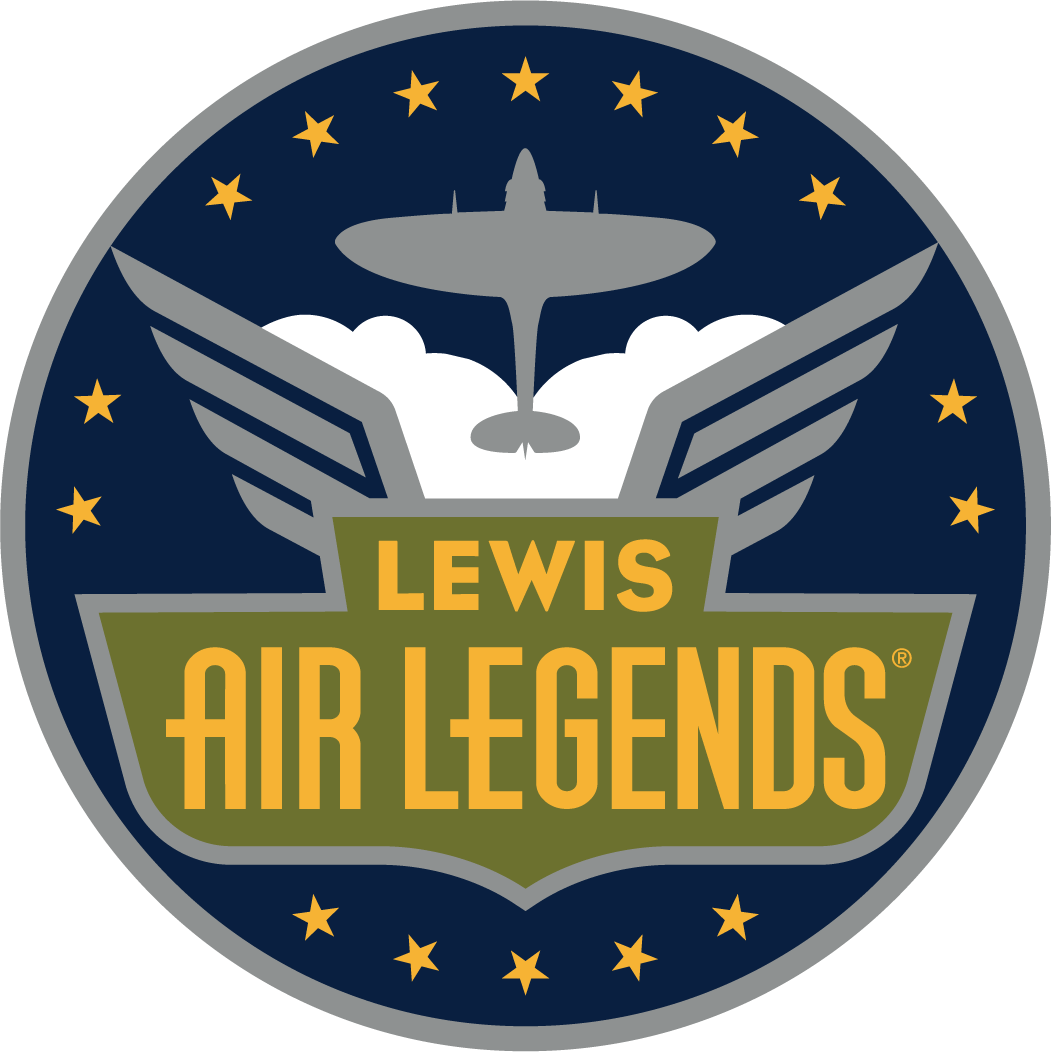Thereʼs no mistaking the bent-wing beauty of the handsome but intimidating Vought F4 Corsair, a signature aircraft of the WWII U.S. Navy and flying Marines. Many will recognize the powerful fighter from the Black Sheep Squadron of 1970s TV fame, a fictional version of the command of Marine Corps Major Gregory “Pappy” Boyington in the Solomon Islands of the Pacific theater. With the F4U, the Navy finally had a fighter that could easily outpace and outmaneuver the Japanese Zeroes. In fact, many Japanese pilots remarked that the Corsair was their most fearsome opponent. Japanese ground troops nicknamed the Corsair “the whistling death.” Considering the F4ʼs 11:1 kill ratio, this seems an understatement. Demand for the plane quickly outstripped Voughtʼs production capacity and Goodyear and Brewster were contracted to meet the need. The Corsair in the Lewis fleet was made by Goodyear and so bears the FG designation.
Early on, the challenges of making the F4 a viable carrier-based fighter were numerous. Nearly every design aspect stretched the limits of the current technology. The huge engine (for the early models a 2,000 horsepower Pratt & Whitney radial) demanded an extra-long propeller, lengthening the landing struts, which further complicated the visibility of the aft-positioned canopy. Landing a Corsair on a carrier underway was not for the faint-hearted. The Lewis Air Legends Corsair, built in 1945, racked up 693 flying hours with U.S. Navy and Reserve units during active duty. In civilian life, this proud warrior won Grand Champion WWII Warbird at Sun ‘N Fun and Best Fighter at AirVenture in Oshkosh in 2006. Still every inch a fighter.


